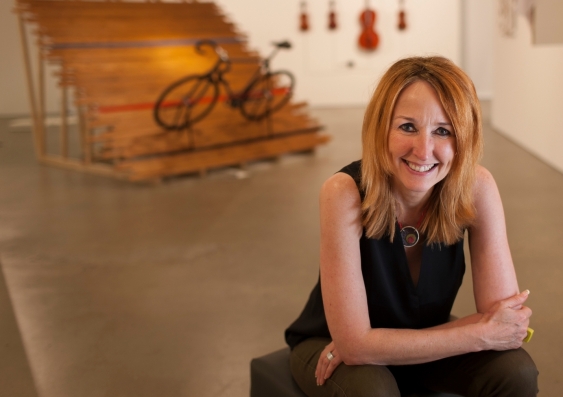UNSW academic leads creative arts into a $10m national mental health centre
Scientia Professor and Australian Research Council (ARC) Laureate Fellow Jill Bennett at UNSW Arts, Design & Architecture will join leading mental health researchers in a national centre funded to the tune of $10 million by the National Health and Medical Research Council’s (NHMRC) Special Initiative in Mental Health. The researchers will work with more than 2000 people living with mental illness to develop better models of care across Australia.
The new centre, based at the University of Melbourne, will operate as a virtual network across 14 university partners from all states and territories. It will establish a national Academy of LIVed-Experience (ALIVE), ensuring members with experience of mental ill health are at the forefront of research to co-design and transform the mental health care system.
Prof. Bennett – who is also founding director of the National Institute for Experimental Arts (NIEA) at UNSW School of Art & Design and of The Big Anxiety Festival – says there’s a “sea change” in mental health care at present with the recognition that lived experience must be placed at the centre of the system. People, including the government and prime minister, are calling for a whole-of-community approach that goes beyond the health sector.
“This is a real shift, which encourages us to reimagine what mental health services look like, where and how they’re delivered, and what form support takes in non-clinical spaces,” she says. “We see the arts as absolutely essential to this new whole-of-community approach to mental health and as playing a key role in the ecosystem.
“It’s a wonderful opportunity to be part of an NHMRC-funded centre focusing on mental health and putting lived experience first. Also, what’s really exciting for us is that it embraces the kind of creative work we’ve been doing.”
Through the ARC Laureate lab she leads – Felt Experience & Empathy Lab (fEEL) – and The Big Anxiety Festival, Prof. Bennett has established a practice combining participatory design, psychology and the use of immersive media to advance understandings of experience.
“Both these research-based enterprises are about deepening and diversifying the nature of communication and engagement in mental health. Working with psychologists, we use art and design, and creative thinking, to support an expanded discussion of mental health.
“We also identify and design actual support tools for people to work through difficulties and to find crisis support. It is all very much about working with communities with lived experience.”
One such tool is The Edge of the Present, an immersive virtual reality (VR) experience that improves mood and capacity for future thinking. Developed by a team of UNSW Arts, Design & Architecture researchers led by media artist Dr Alex Davies and Prof. Bennett in partnership with the Black Dog Institute and people with lived experience of depression and suicidality, The Edge of the Present is now funded by Suicide Prevention Australia.
“This is a new way of thinking about the kind of resources available to people in crisis. It’s not a ‘treatment’ administered by a health professional but a self-directed tool that is ultimately a pleasant engagement – a bit like accessing a game or another kind of virtual reality entertainment,” Prof. Bennett says.
“It’s an example of how we produce work at the intersection of the cultural and health sectors that can be accessed by people in community spaces. It has a very different feel to medical intervention, which is important if we want to reach large numbers of people who don’t access clinical support for whatever reason – stigma, distance or not having the right services available. It isn’t a single solution but definitely part of the bigger picture of mental health support going forward.”
The Edge of the Present installation will travel to a number of regional and remote communities in Queensland later this year as part of The Big Anxiety Festival’s The Big Reach program. The festival, founded by Prof. Bennett, broke new ground, occupying the space between art, technology, health and research. It now combines art, science and community work to deliver one of the largest arts and mental health festivals in the world.

